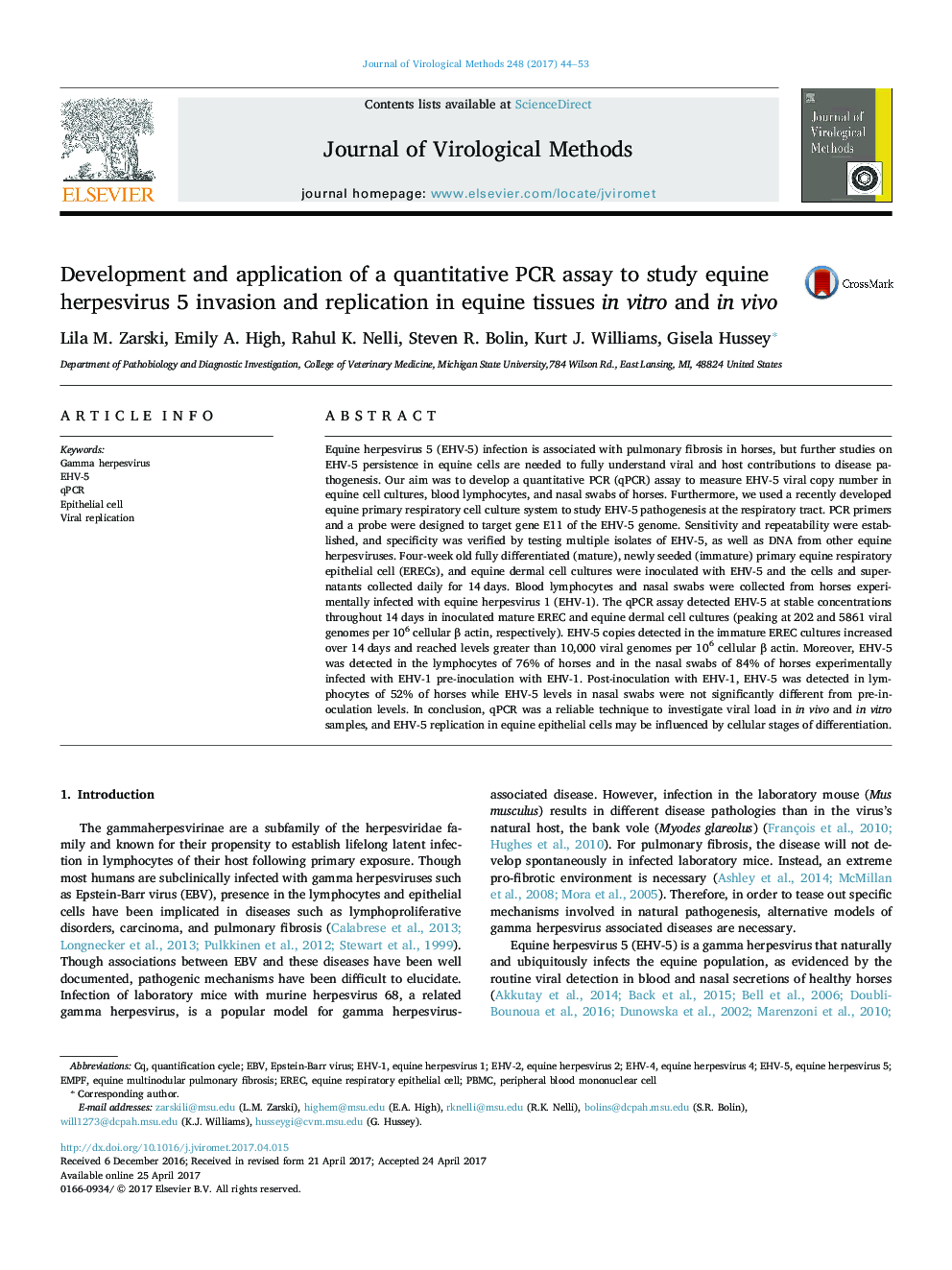| کد مقاله | کد نشریه | سال انتشار | مقاله انگلیسی | نسخه تمام متن |
|---|---|---|---|---|
| 5672924 | 1593429 | 2017 | 10 صفحه PDF | دانلود رایگان |

- An E11 specific qPCR was developed to quantify EHV-5 in horses and in vitro samples.
- qPCR can be used to characterize EHV-5 infection in a variety of equine cells.
- EHV-5 growth in equine epithelial cells is influenced by cellular differentiation.
Equine herpesvirus 5 (EHV-5) infection is associated with pulmonary fibrosis in horses, but further studies on EHV-5 persistence in equine cells are needed to fully understand viral and host contributions to disease pathogenesis. Our aim was to develop a quantitative PCR (qPCR) assay to measure EHV-5 viral copy number in equine cell cultures, blood lymphocytes, and nasal swabs of horses. Furthermore, we used a recently developed equine primary respiratory cell culture system to study EHV-5 pathogenesis at the respiratory tract. PCR primers and a probe were designed to target gene E11 of the EHV-5 genome. Sensitivity and repeatability were established, and specificity was verified by testing multiple isolates of EHV-5, as well as DNA from other equine herpesviruses. Four-week old fully differentiated (mature), newly seeded (immature) primary equine respiratory epithelial cell (ERECs), and equine dermal cell cultures were inoculated with EHV-5 and the cells and supernatants collected daily for 14 days. Blood lymphocytes and nasal swabs were collected from horses experimentally infected with equine herpesvirus 1 (EHV-1). The qPCR assay detected EHV-5 at stable concentrations throughout 14 days in inoculated mature EREC and equine dermal cell cultures (peaking at 202 and 5861 viral genomes per 106 cellular β actin, respectively). EHV-5 copies detected in the immature EREC cultures increased over 14 days and reached levels greater than 10,000 viral genomes per 106 cellular β actin. Moreover, EHV-5 was detected in the lymphocytes of 76% of horses and in the nasal swabs of 84% of horses experimentally infected with EHV-1 pre-inoculation with EHV-1. Post-inoculation with EHV-1, EHV-5 was detected in lymphocytes of 52% of horses while EHV-5 levels in nasal swabs were not significantly different from pre-inoculation levels. In conclusion, qPCR was a reliable technique to investigate viral load in in vivo and in vitro samples, and EHV-5 replication in equine epithelial cells may be influenced by cellular stages of differentiation.
Journal: Journal of Virological Methods - Volume 248, October 2017, Pages 44-53